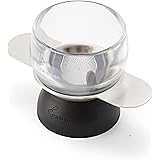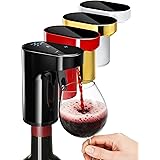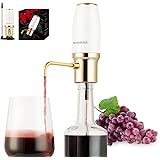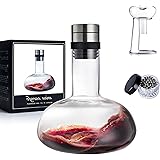Are you tired of the laborious, often messy, and technically challenging aspects of traditional home winemaking? The pursuit of a pristine, high-quality vintage from your own home can be incredibly rewarding, yet the process often involves multiple transfers, the risk of oxidation, and the loss of precious volume. The video above introduces an innovative solution: the FastFerment Winemaking Starter Kit, a conical fermenter designed to simplify and elevate your winemaking experience. This system addresses many common pain points, promising a more efficient path to exceptional results, even for those just beginning their enological journey.
Revolutionizing Home Winemaking with Conical Fermenters
For centuries, winemaking has been a revered art, passed down through generations, often synonymous with intricate processes and substantial effort. Traditional methods typically demand multiple racking steps—transferring wine from one vessel to another to separate it from spent yeast and sediment, known as lees. This conventional approach, while effective, inherently introduces risks such as oxygen exposure, which can lead to oxidation and off-flavors, and potential microbial contamination that can compromise an entire batch. Furthermore, the sheer physical labor and the constant vigilance required can deter even the most passionate hobbyists from pursuing their winemaking aspirations.
However, modern fermentation technology has ushered in an era of unprecedented efficiency and control. The conical fermenter, exemplified by the FastFerment system, represents a significant leap forward in home winemaking. This innovative design minimizes intervention while maximizing quality, making sophisticated techniques accessible to a broader audience. It merges the professional-grade advantages of commercial breweries and wineries with the convenience required for a home setup, fundamentally changing how amateur vintners approach their craft. The result is a streamlined process that dramatically reduces the time and effort traditionally associated with producing high-quality wine.
The Science Behind “No Racking, No Transferring”
The core promise of the FastFerment system, highlighted in the video, is its ability to eliminate the need for traditional racking and transferring. This isn’t merely a convenience; it’s a strategic design choice rooted in fermentation science that profoundly impacts the final product. Understanding the mechanisms at play reveals why this simplification is so revolutionary for both novice and experienced winemakers alike.
Eliminating the Racking Process
Racking, traditionally a cornerstone of winemaking, involves siphoning wine from one carboy or bucket to another, leaving behind the settled yeast and particulate matter. This step is crucial for clarity and flavor stability, yet it is also a primary vector for potential issues. Each transfer introduces a risk of oxygen ingress, which can rapidly oxidize delicate wine compounds, converting ethanol into undesirable acetaldehyde, leading to dull, sherry-like flavors and browning. A study published in the Journal of Agricultural and Food Chemistry, for instance, showed that even brief, uncontrolled exposure to oxygen during racking can significantly elevate acetaldehyde levels, particularly in young wines.
The conical design of the FastFerment system elegantly circumvents these challenges. Gravity naturally pulls the yeast and other solids down into a detachable collection ball at the bottom of the cone. This allows for the clean separation of lees from the fermenting wine without any direct contact between the wine and the air. By simply detaching the collection ball, sediment is removed, and the wine remains undisturbed in its primary fermentation vessel, dramatically reducing the “80% less work” claimed by the FastFerment system. This minimizes volumetric loss due to sediment, a common issue in traditional setups, and preserves the wine’s delicate aromatic and flavor profiles.
Streamlined Transferring and Bottling
Beyond racking, traditional winemaking often necessitates further transfers for secondary fermentation, aging, or prior to bottling. Each of these steps, much like racking, presents opportunities for contamination and oxidation. The integrity of a wine’s delicate aromas and colors can be compromised with every movement, leading to diminished quality in the finished product. These multiple transfers also consume valuable time and create additional cleanup, detracting from the enjoyment of the winemaking process.
The FastFerment conical fermenter streamlines these critical stages by consolidating them within a single, sealed unit. After the primary fermentation and removal of lees, the wine can remain in the same vessel for secondary fermentation or bulk aging. When it’s time to bottle, the integrated spigot allows for direct bottling from the fermenter, bypassing yet another transfer step. This single-vessel methodology minimizes the wine’s exposure to environmental factors, significantly reducing the probability of spoilage and ensuring a consistent, high-quality output. The system’s design essentially transforms a multi-stage, high-risk process into a low-risk, single-vessel operation.
The Strategic Advantage of Yeast Harvesting
One of the often-overlooked yet incredibly valuable features of a conical fermenter like the FastFerment system is the ability to harvest yeast. For the serious home winemaker, yeast management is not just a cost-saving measure but a powerful tool for achieving batch consistency and exploring specific fermentation characteristics. Traditional methods make yeast harvesting a difficult, often unsanitary, and yield-inefficient process, largely limiting it to professional settings.
However, the FastFerment’s integrated collection ball makes yeast harvesting incredibly straightforward and hygienic. Once fermentation is complete and the yeast has settled, it can be easily drained into a sterile container from the collection ball, separate from the main batch of wine. This ensures a clean, concentrated yeast slurry free from significant wine solids or unwanted microbes. Re-pitching healthy, active yeast from a successful batch not only reduces the recurring cost of purchasing new yeast packets, potentially saving a winemaker hundreds of dollars annually across multiple batches, but also allows for the propagation of preferred strains that have demonstrated optimal performance with specific grape varietals or desired flavor profiles. Maintaining a consistent yeast culture contributes significantly to overall quality control and predictability in successive batches.
Mastering Fermentation Dynamics with the FastFerment Conical Fermenter
The benefits of the FastFerment conical fermenter extend beyond mere convenience; they delve deep into the science of fermentation, offering enhanced control over critical dynamics. Mastering these aspects leads directly to superior wine quality, a goal shared by all serious vintners. The system’s design inherently provides advantages that are difficult to replicate with traditional equipment.
Preventing Oxidation and Contamination
The primary enemies of quality wine are oxidation and microbial contamination. Oxidation can occur when wine is exposed to oxygen, leading to the formation of undesirable compounds like acetaldehyde, which imparts bruised apple or sherry notes. Contamination, from wild yeasts or bacteria, can introduce off-flavors such as acetic acid (vinegar) or mousiness, ruining an entire batch. Traditional open-bucket fermentations or multiple racking steps create numerous points of vulnerability where these issues can arise, making environmental control a constant battle for the home winemaker.
The FastFerment system functions as a completely closed, single-vessel environment throughout the primary and secondary fermentation stages. By minimizing the number of times the wine is exposed to ambient air and external surfaces, the risk of both oxygen ingress and microbial spoilage is drastically reduced. This closed-system integrity ensures that delicate esters and phenols are preserved, contributing to a more vibrant and aromatic wine. Professional wineries often invest heavily in inert gas blanketing and sophisticated sanitation protocols to achieve this level of protection, which the FastFerment system provides inherently through its design, making it a powerful tool for maintaining pristine fermentation conditions.
Achieving Superior Clarity and Flavor Profiles
Clarity and a clean flavor profile are hallmarks of well-made wine, yet achieving them consistently can be challenging. Post-fermentation, residual yeast and other suspended solids (lees) can contribute to haze and, if left in contact with the wine for extended periods, can impart bitter or yeasty off-flavors through a process known as autolysis. This cellular breakdown releases compounds that, while desirable in some niche applications like Champagne aging, are generally avoided in most table wines.
With the FastFerment’s conical design, yeast and trub settle rapidly and efficiently into the collection ball, allowing for quick and complete separation from the wine. This efficient removal of lees prevents undesirable autolytic flavors from developing, ensuring the wine’s true varietal character and fermentation-derived aromas shine through. The result is consistently clearer wine with a cleaner finish, allowing the nuanced flavors and aromas of your chosen grapes or fruit to dominate the sensory experience. This level of control over sediment management is a key factor in producing wines that rival commercial quality, giving home winemakers a distinct advantage in their pursuit of excellence.
Beyond the Basics: Advanced Applications and Capacity
While the FastFerment Winemaking Starter Kit is marketed as “BEGINNER FRIENDLY,” its robust features and significant 7.9-gallon (30-liter) capacity make it far more than just an entry-level piece of equipment. This volume is ideal for a standard five-gallon batch of wine, leaving ample headspace for vigorous primary fermentation without the risk of blow-off. For those looking to scale up slightly or experiment with larger batches of specialty wines, this capacity offers crucial flexibility, positioning it as a versatile asset for growth within the hobby.
Beyond winemaking, the FastFerment system is also perfectly suited for other fermented beverages, including mead, cider, and even larger batches of kombucha or fruit wines. Its conical design and yeast harvesting capabilities are universally beneficial across the fermentation spectrum. The ease of setup and sanitation, coupled with the profound impact on fermentation control and batch consistency, empowers beginners to achieve expert-level results from their very first batch. Ultimately, the FastFerment conical fermenter represents an investment in not just convenience, but in the scientific precision and quality potential of your home fermentation projects.







